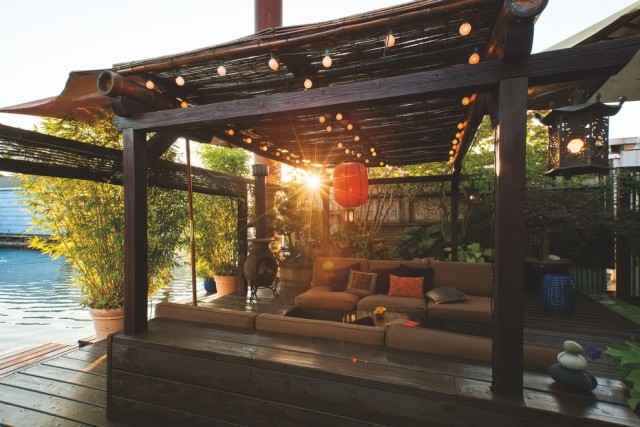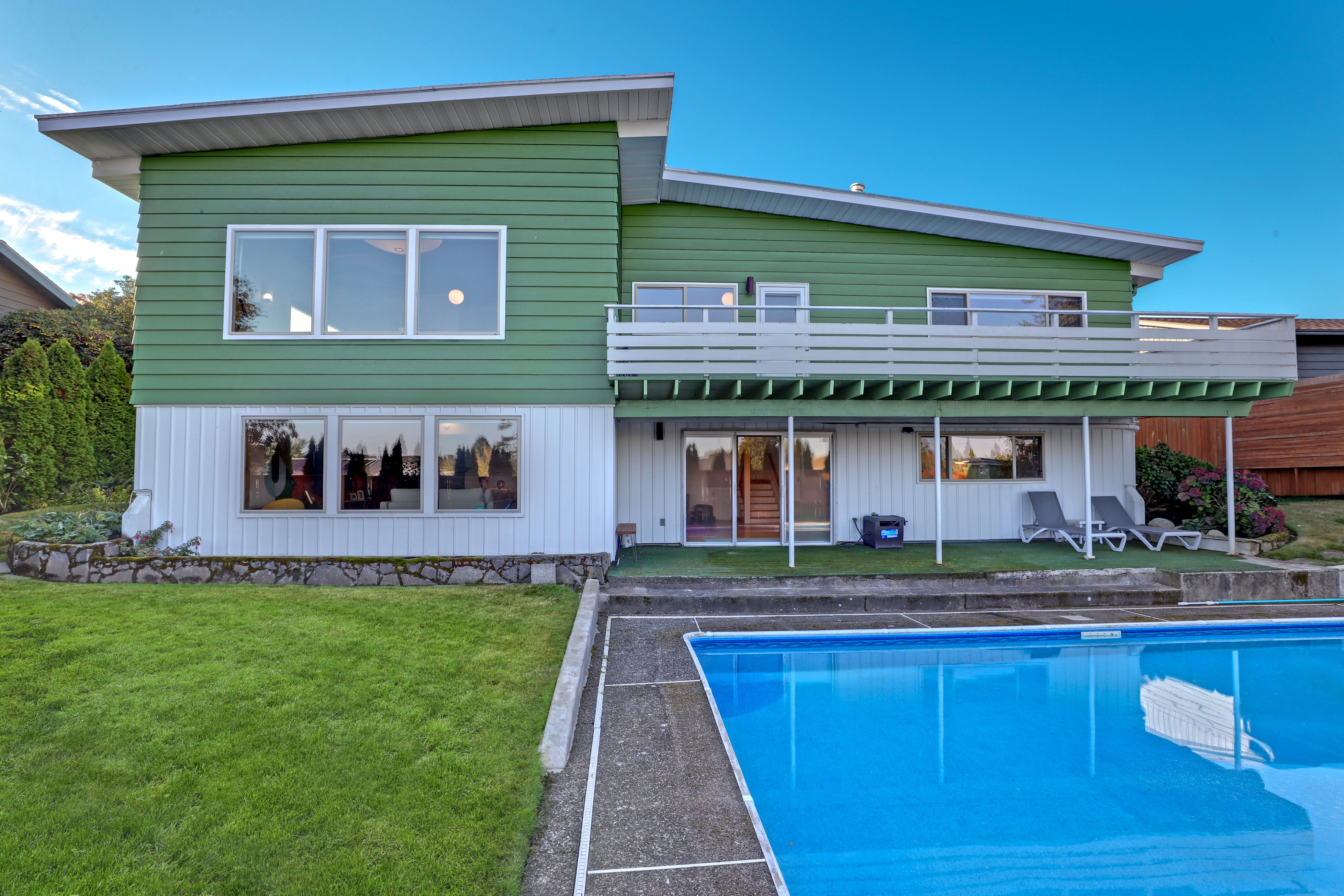The Houseboat Life
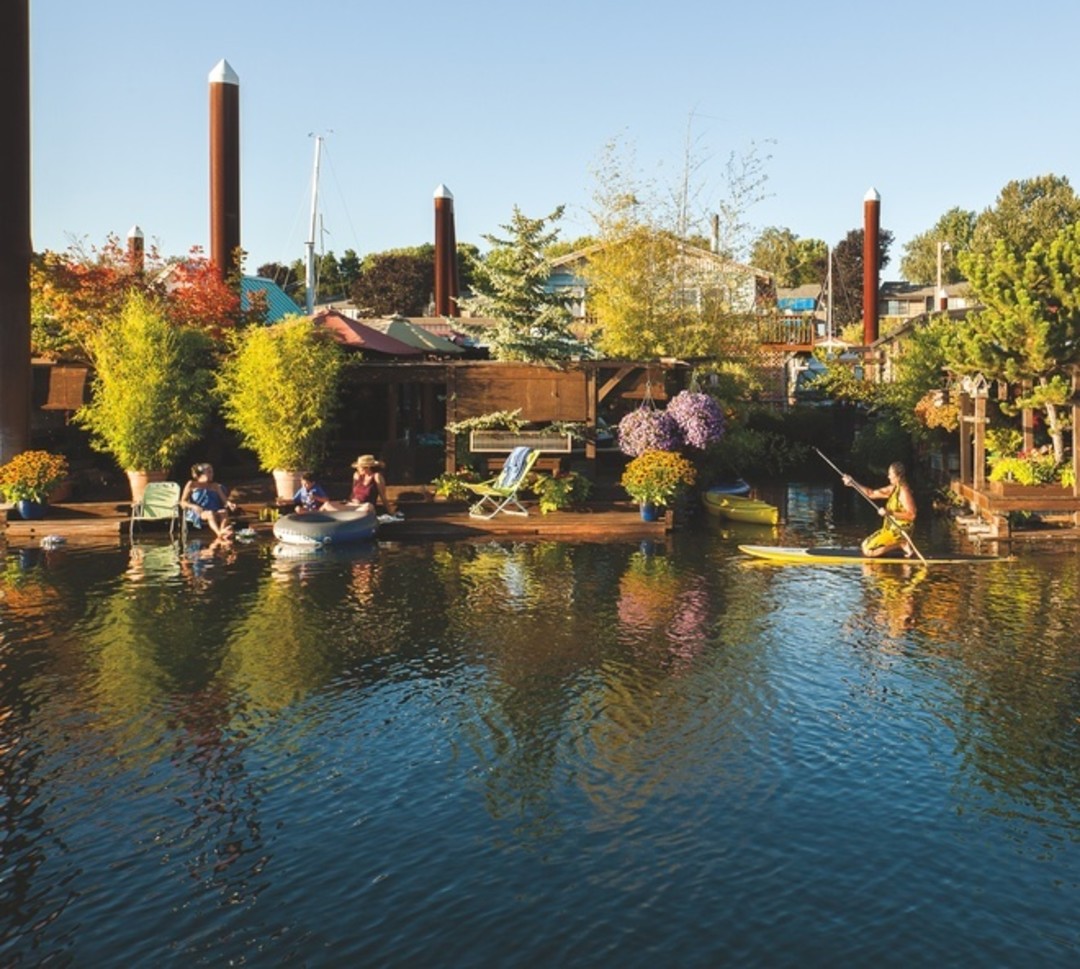
With lush landscaping for both homes, Diane Hall and her sister have created their own island paradise just off Hayden Island.
Image: Stephen Tamiesie
Two houseboats gently bobbing in adjacent Hayden Island slips share a long lineage signaled by their gently sloping roofs: they are 1920s-era shanties designed by legendary boatbuilder Ed Hargraves. Sitting atop thick, indestructible old-growth logs, they were constructed for fishing, the ceilings kept low so that nets could be easily tossed on top to dry.
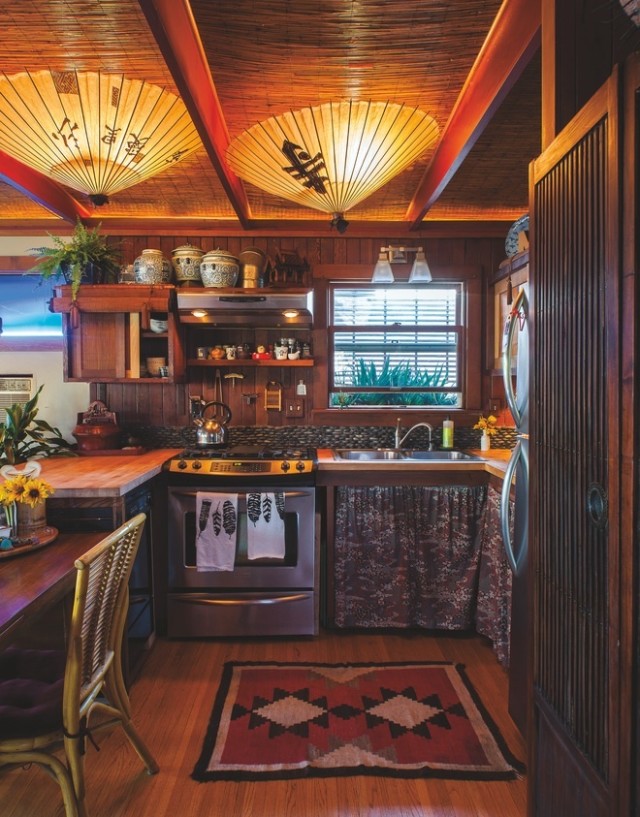
Living, sleeping, and eating zones blend into Hall’s exquisitely appointed 750-square-foot studio.
Image: Stephen Tamiesie
The boats’ current inhabitants reflect a shared lineage of their own, their jet-black but graying hair and copper skin giving away their Algonquin-Irish heritage. Physical resemblance aside, Diane Hall and Julie Higgs have their differences. “We have a lot of crossovers: we both cook and entertain a lot,” says Hall. “But Julie is ... just bigger and bolder and a little louder. She loves to party, wants a lot of people around. She’s a decorator. She collects things.”
Higgs paints their differences in colors: “Diane likes blue and purple; I like green and orange.”
But just as the sisters have grown together and apart, so too have their floating homes. Houseboating was Higgs’s idea. After many a happy hour at Island Café, Hayden Island’s charming floating eatery, she began to crave a life on the water. She researched slips from Oregon City to Sauvie Island, eventually discovering her 1,100-square-foot Hargraves in Sellwood and hauling it up to Hayden Island. Hall remembers her sister calling with a suggestion: “There’s a little house next door with your name on it.” Higgs’s new home had already been redone with cedar paneling and a geothermal heat pump. Hall describes what she found—and still opted to buy—as “a floating trailer.” It was 750 square feet of “original,” and like most Hargraves shanties, really intended only for fishing-season habitation.
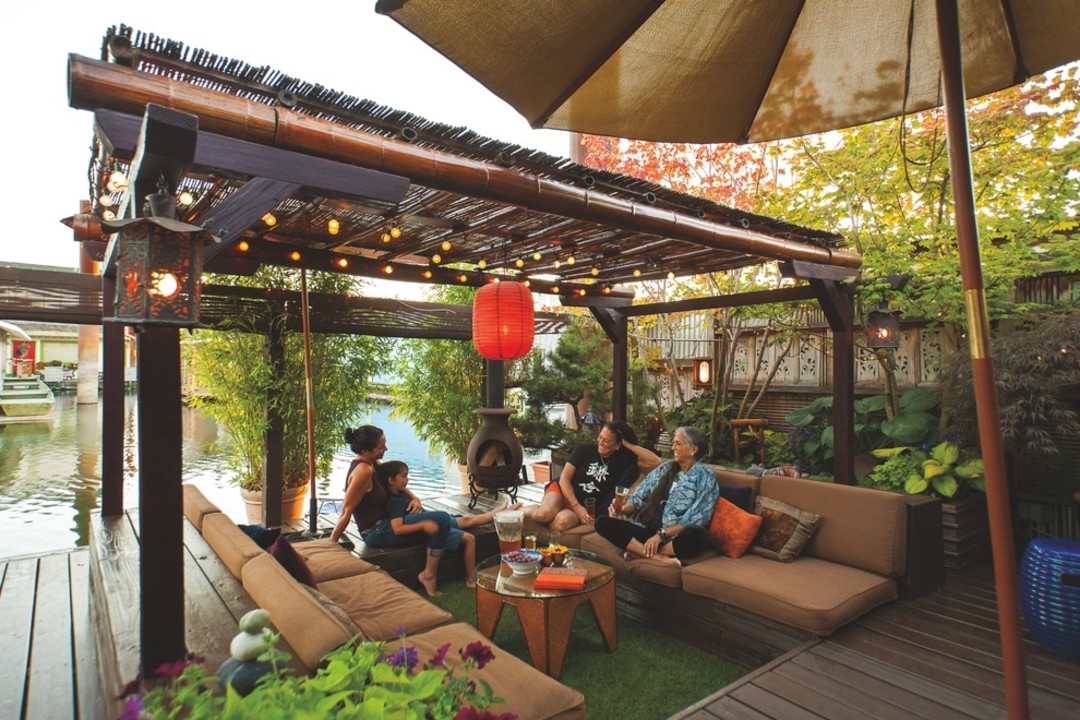
Diane Hall (from right), Julie Higgs, and Hall’s daughter Summer McChesney with her son Moto
Image: Stephen Tamiesie
In the 13 years since, the two homes have evolved with each sister’s distinct, designerly take on living small. Higgs redid her kitchen with a gourmet stove, granite countertops, and stainless steel inserts. Hall, known among longtime Portlanders for the menu she developed for Macheezmo Mouse, the renowned local Mexican fast-food chain that closed in 2003 (she recently brought the company’s once-legendary “Boss Sauce” to local shelves as “Booda Sauce”), has surrounded her more modest stove with well-worn butcher-block counters and river-stone backsplashes. She carefully freed their rounded textures of extra mortar herself by using Q-tips. Higgs installed a bar to hide the heat pump. Hall covered virtually every cabinet with antique wood panels, crafted into sliding doors by the master woodworker Takahiro Moriki. When Higgs towed her houseboat to the island, she brought along two floating decks, one for her, one for her sister. Over time, both gained sunken seating surrounding tables for relaxed, water-level dining. With an older sister’s well-used smile, Hall notes that her seating area was first. Higgs says she built hers “like, the next week”—beside her hot tub.
Both women came of age in Laguna Beach, then traveled the world: Hall studied yoga and Zen Buddhism and, always cooking, spent years at a time in India, Thailand, and Costa Rica; Higgs hopped from Thailand to Australia, Tahiti, and Mexico.
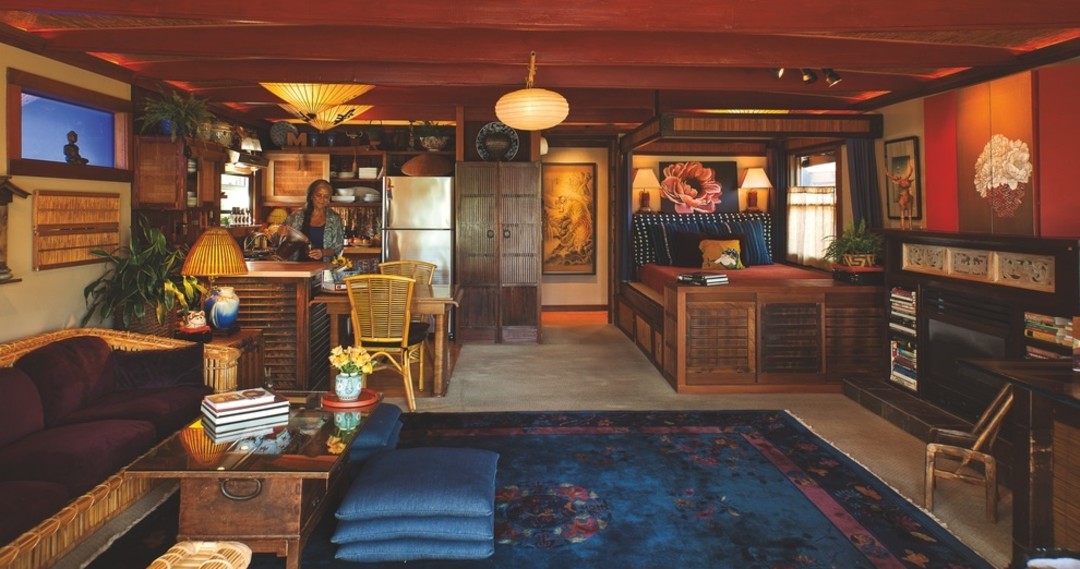
Diane Hall's 750-square-foot studio
Image: Stephen Tamiesie
In both houses, no space is left unused—whether beneath sink, couch, or bed. Both sisters favor orchids and Hiroshige prints. The décor in Higgs’s larger, one-bedroom, two-bathroom unit feels a lot like the well-arranged SE Division Street shop she used to run, Fleur de Lis, with its easygoing mix of antique glass-bead curtains from Hong Kong, Murano glass, a subtly printed zebra-patterned stuffed chair, and more.
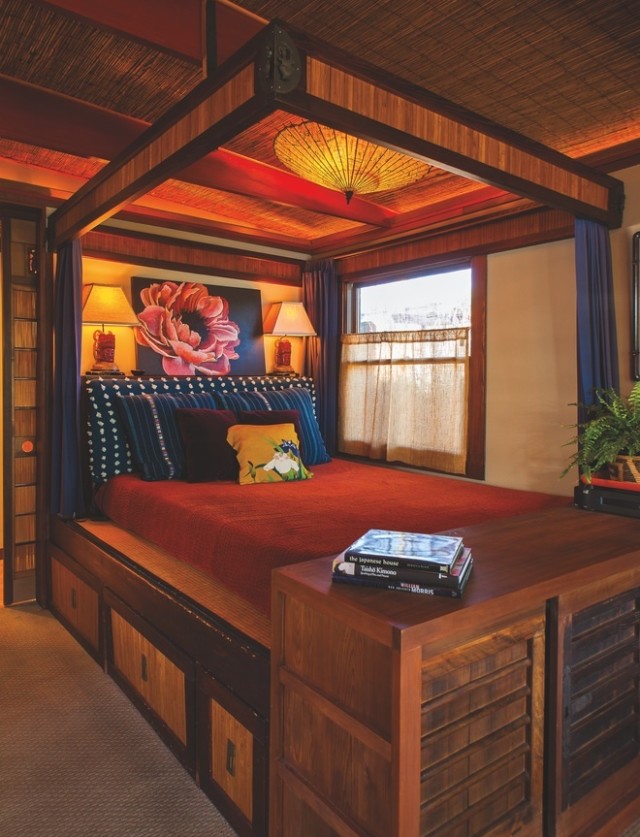
With the pull of a curtain, Hall's studio transforms.
Image: Stephen Tamiesie
Hall’s boat blends inviting comfort with an intricacy that dissolves distinctions between the sitting, dining, and sleeping areas of what is, in effect, a studio apartment. Surrounded by a John McGuire rattan couch and chairs, a painstakingly crafted coffee-table vitrine holds the Shoshone-beaded moccasins she wore throughout India, and an ancient Thai teapot, the metallurgy of which predates Europe’s. Below a watercolor by her friend Gus Van Sant, necklaces of rock-size turquoise hang as boldly as the décor.
As people and dogs swim by, Hall says that as she contemplated her move to the water, she feared winters. But now every season delivers its gifts: the songs of red- and yellow-winged blackbirds stopping by as they head north in the spring; summer’s early-morning kayak glides before work; the otters and beavers preparing for winter; the low-hanging sunlight glinting on the water during the shortest days. “You learn as you go on the river,” she says.
Higgs has bought, lived in, fixed up, and sold four houses. No more. She’s staying. “The minute I got it, it was like Christmas morning,” she says. “It’s been like Christmas ever since. I use every excuse not to leave.”
For more photos, click through to the slide show below.
